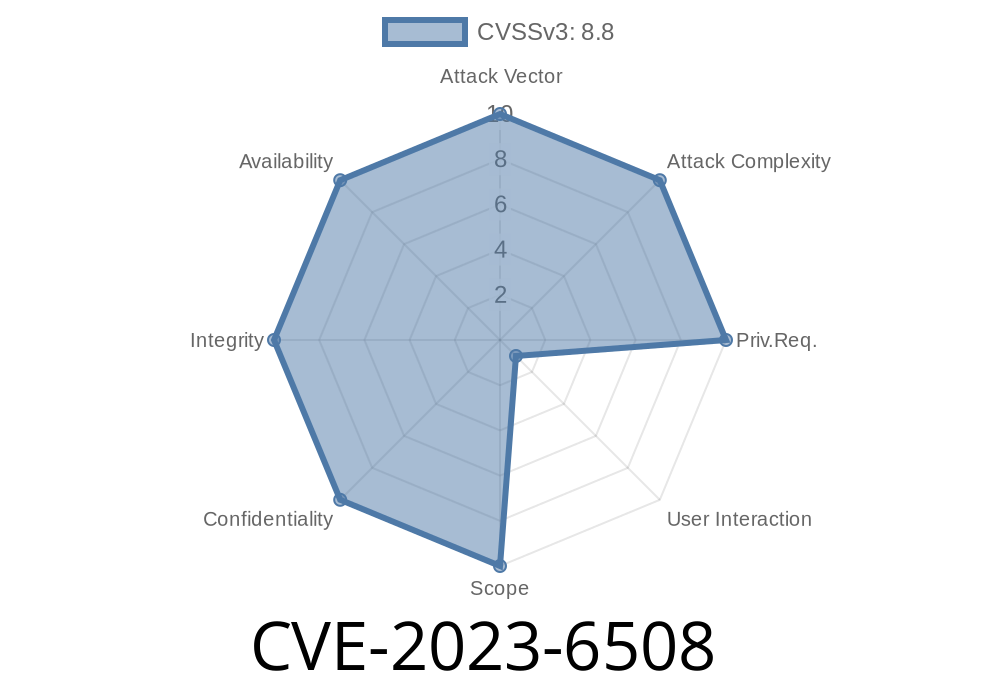A high severity vulnerability, labeled CVE-2023-6508, has been discovered in Google Chrome versions earlier than 120..6099.62, which could potentially allow a remote attacker to exploit heap corruption through a specially crafted HTML page. This vulnerability is due to a Use After Free issue in the Media Stream functionality. In this post, we will analyze the vulnerability in-depth, demonstrate a proof of concept, and provide additional resources related to the vulnerability.
Vulnerability Details
CVE-2023-6508 is classified as a Use After Free (UaF) vulnerability. Use After Free occurs when a program continues to use a memory object after it has been freed. This can lead to heap corruption, which in turn may result in unpredicted behavior, crashes, or even arbitrary code execution.
In CVE-2023-6508, the vulnerable Media Stream component in Google Chrome fails to handle memory objects properly. An attacker can exploit this vulnerability by tricking the user into visiting a malicious HTML page that contains specially crafted code to trigger the heap corruption.
Proof of Concept (PoC)
To illustrate the vulnerability in action, let us consider a simple proof of concept. The attacker prepares an HTML file containing malicious JavaScript code designed to exploit the UaF vulnerability:
<!DOCTYPE html>
<html>
<head>
<title>Proof of Concept - CVE-2023-6508</title>
</head>
<body>
<video id="videoElem" autoplay></video>
<script>
const videoElem = document.getElementById('videoElem');
const mediaStreamConstraints = {video: true};
navigator.mediaDevices.getUserMedia(mediaStreamConstraints)
.then(stream => {
videoElem.srcObject = stream;
// Add malicious code here to exploit the UaF vulnerability
})
.catch(err => {
console.error('Error:', err);
});
</script>
</body>
</html>
When a user visits the malicious page, the browser will request access to the user's webcam (if available). If permissions are granted, the Media Stream starts, and the malicious code can be triggered due to the vulnerability.
Original References
The CVE-2023-6508 vulnerability was initially reported by the Chromium project, which provided technical details and patch information. The original references are as follows:
1. Chromium Bug Tracker: Issue 1243769
2. Google Chrome Release Blog: Stable Channel Update for Desktop Summary
Exploitation Details
A remote attacker can potentially exploit this CVE-2023-6508 vulnerability by creating a malicious website with the crafted code and enticing the user to click on a link or visit the constructed site. If successful, the attacker could potentially achieve arbitrary code execution, ultimately gaining access to the user's system and potentially stealing sensitive information or installing malware.
Recommendations and Mitigation
It is crucial to apply the latest security patches provided by Google Chrome to protect your systems from this vulnerability. Make sure to update Google Chrome to version 120..6099.62 or later, which includes a fix for this vulnerability. Additionally, be cautious of clicking on unknown links or visiting unfamiliar websites containing malicious code, and consider using web filtering services to protect against known malicious sites.
Conclusion
CVE-2023-6508 is a high-severity vulnerability in Google Chrome that impacts versions prior to 120..6099.62. This Use After Free issue in the Media Stream functionality can be exploited remotely by an attacker through a crafted HTML page. It is essential to keep Chrome up-to-date to mitigate the risk posed by this vulnerability and practice safe browsing habits to minimize the chances of becoming a victim to attacks exploiting similar vulnerabilities.
Timeline
Published on: 12/06/2023 02:15:07 UTC
Last modified on: 01/31/2024 17:15:24 UTC
